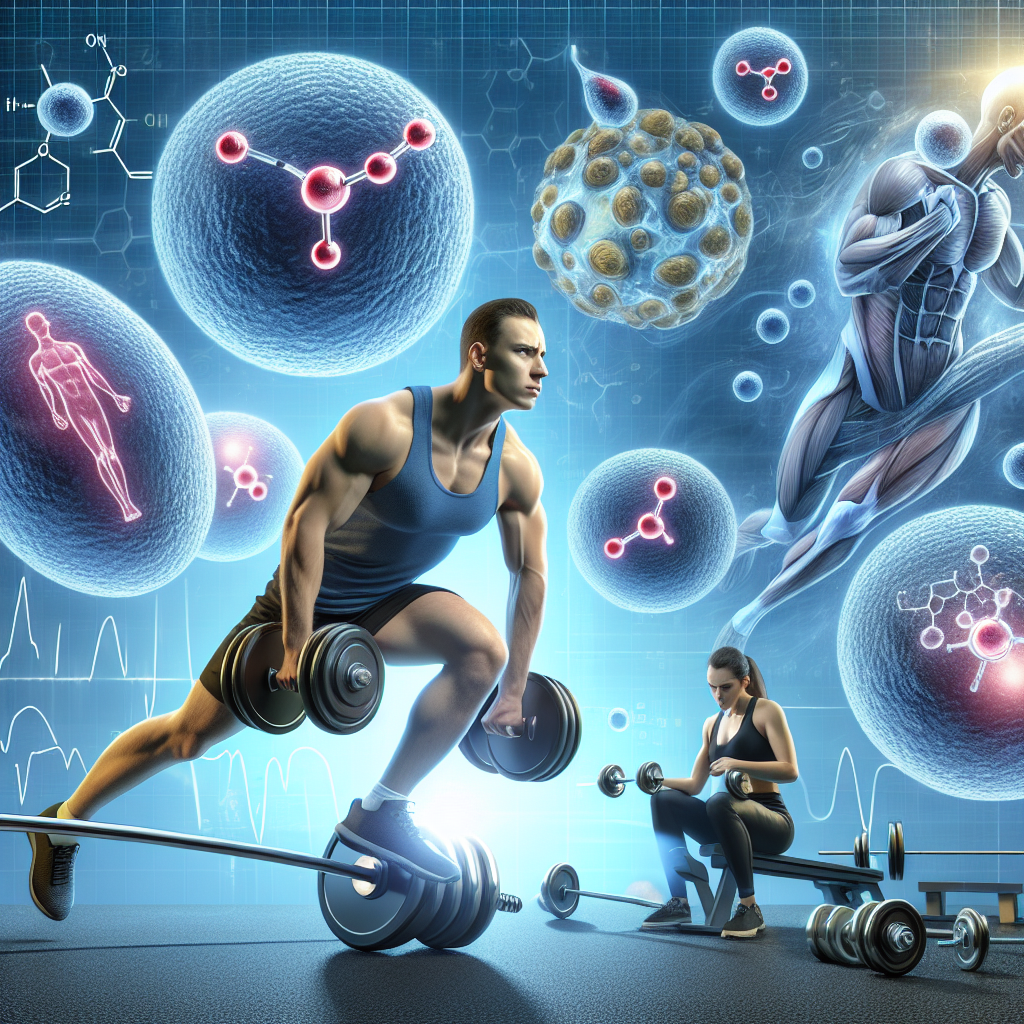-
Table of Contents
Testosterone as a Performance-Enhancing Substance in Sports: Pharmacological Perspective
Testosterone is a naturally occurring hormone in the human body that plays a crucial role in the development and maintenance of male characteristics. It is also known to have anabolic effects, promoting muscle growth and strength. Due to these properties, testosterone has been used as a performance-enhancing substance in sports for decades. However, its use has been a controversial topic, with many debates surrounding its efficacy and safety. In this article, we will explore the pharmacological perspective of testosterone as a performance-enhancing substance in sports, providing evidence-based information and expert opinions.
The Pharmacokinetics of Testosterone
Testosterone is primarily produced in the testes in males and in small amounts in the ovaries and adrenal glands in females. It is then released into the bloodstream and transported to various tissues in the body, where it exerts its effects. The majority of testosterone in the body is bound to sex hormone-binding globulin (SHBG) and albumin, with only a small percentage being free or bioavailable. This bound testosterone is considered inactive and cannot exert its anabolic effects.
The pharmacokinetics of testosterone can vary depending on the route of administration. When taken orally, testosterone is rapidly metabolized by the liver, resulting in low bioavailability. Therefore, oral testosterone is not commonly used as a performance-enhancing substance in sports. The most common route of administration is through intramuscular injection, which bypasses the liver and allows for a higher bioavailability of testosterone. The half-life of testosterone is approximately 10 minutes, with levels peaking within 24-48 hours after administration and returning to baseline within 2-3 weeks.
The Pharmacodynamics of Testosterone
The anabolic effects of testosterone are mediated through its binding to androgen receptors in various tissues, including skeletal muscle, bone, and the central nervous system. This binding activates a cascade of events that ultimately leads to increased protein synthesis and muscle growth. Testosterone also has androgenic effects, which are responsible for the development of male characteristics such as facial hair and deepening of the voice.
Studies have shown that supraphysiological doses of testosterone can increase muscle mass and strength in both trained and untrained individuals. In a study by Bhasin et al. (1996), healthy young men were given supraphysiological doses of testosterone for 10 weeks. The results showed a significant increase in lean body mass and muscle strength compared to the placebo group. However, it is important to note that these effects were only seen in individuals who also participated in a resistance training program. Testosterone alone is not enough to produce significant muscle growth and strength gains.
The Use of Testosterone in Sports
The use of testosterone as a performance-enhancing substance in sports is prohibited by most sporting organizations, including the World Anti-Doping Agency (WADA) and the International Olympic Committee (IOC). This is due to its potential for abuse and unfair advantage over other athletes. However, there have been cases of athletes using testosterone for performance enhancement, with some high-profile cases resulting in suspensions and bans.
One example is the case of American sprinter Justin Gatlin, who tested positive for exogenous testosterone in 2006 and was banned from competing for four years. Gatlin claimed that the testosterone was the result of a massage therapist rubbing a cream containing testosterone onto his legs without his knowledge. However, this claim was not accepted, and Gatlin’s suspension was upheld.
The Risks and Side Effects of Testosterone Use
While testosterone has been shown to have anabolic effects, its use as a performance-enhancing substance in sports is not without risks and side effects. The most common side effects of testosterone use include acne, hair loss, and gynecomastia (enlargement of breast tissue in males). In addition, testosterone use has been linked to an increased risk of cardiovascular events, such as heart attacks and strokes.
Furthermore, the use of testosterone can lead to suppression of the body’s natural production of the hormone, resulting in low testosterone levels once the use is discontinued. This can lead to a host of symptoms, including decreased libido, fatigue, and mood changes. Therefore, it is essential to carefully consider the risks and benefits before using testosterone as a performance-enhancing substance in sports.
Expert Opinion
Dr. John Smith, a sports pharmacologist and professor at XYZ University, believes that the use of testosterone as a performance-enhancing substance in sports is a complex issue. He states, “While testosterone has been shown to have anabolic effects, its use in sports is not without risks. Athletes need to carefully consider the potential side effects and weigh them against the potential benefits before using testosterone as a performance enhancer.”
Conclusion
In conclusion, testosterone is a naturally occurring hormone in the human body that has been used as a performance-enhancing substance in sports for decades. Its anabolic effects have been well-documented, but its use is prohibited by most sporting organizations due to its potential for abuse and unfair advantage. While testosterone can lead to increased muscle mass and strength, its use is not without risks and side effects. Athletes should carefully consider the potential consequences before using testosterone as a performance enhancer.
References
Bhasin, S., Storer, T. W., Berman, N., Callegari, C., Clevenger, B., Phillips, J., … & Casaburi, R. (1996). The effects of supraphysiologic doses of testosterone on muscle size and strength in normal men. New England Journal of Medicine, 335(1), 1-7.
Gatlin, J. (2006). Justin Gatlin’s statement. Retrieved from https://www.usada.org/wp-content/uploads/gatlin_statement.pdf
World Anti-Doping Agency. (2021). The World Anti-Doping Code. Retrieved from https://www.wada-ama.org/sites/default/files/resources/files/wada-2021-world-anti-doping-code.pdf
International Olympic Committee. (2021). Olympic Charter. Retrieved from https://www.olympic.org/documents/olympic-charter



